Caryn’s Thoughts
 Anyone who knows much about Nazi Germany, knows that Adolf Hitler was insane. His hatred for the Jewish people was nothing less that insanity, because he had no valid reason to hate them. Nevertheless, the Holocaust did happen. Hitler did kill between five and six million Jews during his reign of terror. Many people thought that the Jews were the only target Hitler had too, but that wasn’t so. Hitler wanted to kill anyone who annoyed, inconvenienced, or even remotely bothered him. On this day, July 8, 1943, upon the German army’s invasion of Pskov, 180 miles from Leningrad, Russia, the chief of the German army general staff, General Franz Halder, records in his diary Hitler’s plans for Moscow and Leningrad: “To dispose fully of their population, which otherwise we shall have to feed during the winter.” Hitler planned to level both cities, or at least kill everyone in them, because he didn’t want to have to feed the prisoners during the long winter months! And for no other reason. Most armies at least set up prisoner of war camps, which while not terribly humane, gave some semblance of an attempt to be humane. I know that everyone complains about how the United States treats prisoners of war, but there really is no comparison, when you view the way Hitler and some other terrible dictators treat prisoners of war. Humane treatment is a pipe dream for prisoners of dictators.
Anyone who knows much about Nazi Germany, knows that Adolf Hitler was insane. His hatred for the Jewish people was nothing less that insanity, because he had no valid reason to hate them. Nevertheless, the Holocaust did happen. Hitler did kill between five and six million Jews during his reign of terror. Many people thought that the Jews were the only target Hitler had too, but that wasn’t so. Hitler wanted to kill anyone who annoyed, inconvenienced, or even remotely bothered him. On this day, July 8, 1943, upon the German army’s invasion of Pskov, 180 miles from Leningrad, Russia, the chief of the German army general staff, General Franz Halder, records in his diary Hitler’s plans for Moscow and Leningrad: “To dispose fully of their population, which otherwise we shall have to feed during the winter.” Hitler planned to level both cities, or at least kill everyone in them, because he didn’t want to have to feed the prisoners during the long winter months! And for no other reason. Most armies at least set up prisoner of war camps, which while not terribly humane, gave some semblance of an attempt to be humane. I know that everyone complains about how the United States treats prisoners of war, but there really is no comparison, when you view the way Hitler and some other terrible dictators treat prisoners of war. Humane treatment is a pipe dream for prisoners of dictators.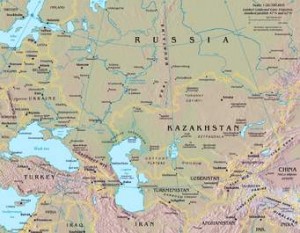
Hitler launched a massive invasion of the Soviet Union on June 22, with over 3 million men. He was highly successful, due in large part to a disorganized and unsuspecting Russian army. By July 8, they had captured 280,000 Soviet prisoners and almost 2,600 tanks were destroyed. The army was already a couple of hundred miles inside Soviet territory. Stalin was in a panic. He was so angry that he began executing generals who had failed to stop the invaders.
Halder, who was Hitler’s chief of staff, had been keeping a diary of the day-to-day decision making process. As time went on, Hitler became emboldened by his successes in Russia. Halder recorded that the “Fuhrer is firmly determined to level Moscow and Leningrad to the ground.” Halder also records the reality of Hitler’s underestimation of the Russian army’s numbers and the bitter fighting within Hitler’s own armies about strategy. Halder and some of the others wanted to make straight for the capital, Moscow. But Hitler wanted to meet up with Field Marshal Wilhelm Leeb’s army group, 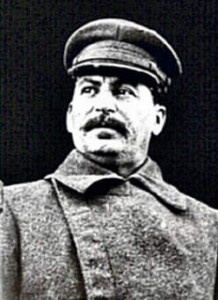 which was making its way toward Leningrad. And Hitler was, after all, in charge. But, the advantage Hitler had against the Soviets would not last very long. Winter was approaching and so was the advantage such conditions would give the Russians. The Russians were used to the severe Russian winters, and Hitler’s men were not. Like Napoleon before them, the Germans would soon find that they weren’t prepared for the Russian winter, and subsequent winters. And yet, Hitler thought he had learned from Napoleon. He ordered his troops to hold their ground. Which meant that during the Winter War, the German army was not able to pull back to more defensible positions. Consequently, the Russians were able to launch a series of counter-attacks during that first winter. These attacks cutoff some German forces, inflicted worse casualties than the Germans could inflict, but more importantly allowed the Russians to rebuild their army. The winter months proved to be just as detrimental for Hitler as they had for Napoleon. He was insane to even try such an attack.
which was making its way toward Leningrad. And Hitler was, after all, in charge. But, the advantage Hitler had against the Soviets would not last very long. Winter was approaching and so was the advantage such conditions would give the Russians. The Russians were used to the severe Russian winters, and Hitler’s men were not. Like Napoleon before them, the Germans would soon find that they weren’t prepared for the Russian winter, and subsequent winters. And yet, Hitler thought he had learned from Napoleon. He ordered his troops to hold their ground. Which meant that during the Winter War, the German army was not able to pull back to more defensible positions. Consequently, the Russians were able to launch a series of counter-attacks during that first winter. These attacks cutoff some German forces, inflicted worse casualties than the Germans could inflict, but more importantly allowed the Russians to rebuild their army. The winter months proved to be just as detrimental for Hitler as they had for Napoleon. He was insane to even try such an attack.
 My grand niece Audrianna Masterson is a girl with a lot on her mind. She may not talk much, except around those who know her well. Those people, of course, know about the goofy side of Audrianna. She likes to tease and joke with her siblings and her cousins. She likes to be funny in general.
My grand niece Audrianna Masterson is a girl with a lot on her mind. She may not talk much, except around those who know her well. Those people, of course, know about the goofy side of Audrianna. She likes to tease and joke with her siblings and her cousins. She likes to be funny in general.
Lately, however, I have begun to notice a change in Audrianna, lovingly known to all of us as Anna. Even though she is only just turning eight today, she is starting to become a more girly girl. She always had that tendency, but with a large dose of tomboy mixed in. Lately though, she seems to be getting more, I don’t know, grown up maybe. In many ways, that reminds me of how my granddaughter, Shai Royce was at that age. They have the ability to tease, but they like to be more quiet and reserved too.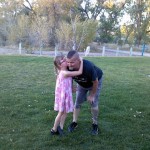
Audrianna, like me, is a thinker. She contemplates the world around her. Some things she is trying to figure out, and other things she knows, but likes to mill over in her head. In fact, Audrianna reminds me so much of myself that it’s uncanny. Being a thinker makes you quiet sometimes, and I suppose it can be misunderstood, but Audrianna knows what I’m talking about. We can be in a room full of people, but we hardly notice it, because we are in our own little thought world. In some ways, it is a difficult place to be, because people misunderstand us sometimes, but in other ways, the thought world in our minds can be an amazing place. We get to spend time in our imaginations, creating things the way we want them to be. I can see that trait in Audrianna. She sometimes is so deep in thought, that you can easily startle her when you talk to her…if she hears you talking to her at all, that is. A deep thinker, might not notice that anyone else is in the room at all.

Audrianna is growing into such an amazing girl. I really look forward to seeing who she will become as she gets older. She is such a thoughtful child. And while she likes to tease, I think there is a kindness in her that far exceeds the normal for her age, or any other. I love it when she comes into a room, and immediately comes up to me and gives me a hug. She just makes everyone around her feel the love she has for them, and when she gives you a hug, you know that you are among those people that Audrianna really cares about. It is a blessing that she alone can give, and the receiver always knows that they have been singled out as a special person to Audrianna. Today is Audrianna’s 8th birthday. Happy birthday Anna!! Have a great day!! We love you!!
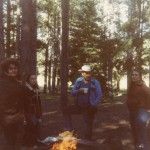
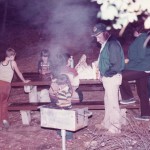 My memories of the Black Hills date back to my childhood, when our parents would take us there. We learned to love the area because of them. Then as adults, we began coming over as a bunch of families. We did everything from the fireworks to shopping to sitting around the campfire at night. I have so many memories of this area, and mom and dad’s echo lives here. It is in the trees, the monuments, and along the roads. I hear them pointing things out to us. They knew all the points of interest. The echo of their words and stories lives on in my mind whenever I’m in the Black Hills, and it doesn’t matter if we are hiking, touring, or in the towns. I can still hear them telling us about the area and their favorite places.
My memories of the Black Hills date back to my childhood, when our parents would take us there. We learned to love the area because of them. Then as adults, we began coming over as a bunch of families. We did everything from the fireworks to shopping to sitting around the campfire at night. I have so many memories of this area, and mom and dad’s echo lives here. It is in the trees, the monuments, and along the roads. I hear them pointing things out to us. They knew all the points of interest. The echo of their words and stories lives on in my mind whenever I’m in the Black Hills, and it doesn’t matter if we are hiking, touring, or in the towns. I can still hear them telling us about the area and their favorite places.
Mom and Dad loved coming here, to the Black Hills, and they spent a lot of time showing us all there was to see. Of course, with the hiking Bob and I do, we have found a few things to see that they have never seen, except when they looked at our many pictures. Nevertheless, we still go and see the things they always loved, and of course, we go to their favorite fireworks display in the world. The fireworks in Custer are amazing, and it’s a display that Bob and I haven’t missed in years either, except the year they were cancelled because the fire danger was too great. Even then, we didn’t mind it, because we would never want fire to destroy such a beautiful area, and having the display then, could have.
While we love coming to the Black Hills, it still felt strange to be here without either of them. I know it was especially hard on my sister, Cheryl Masterson, who always shared a room with them and later with Mom. I think for Cheryl, it felt a little bit like being at loose ends. She was in the place they had stayed for years, but she was there alone. She came over with her kids, so the trip wasn’t alone, but it was just that she was in the 
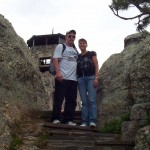 motel room alone. It just felt strange, and empty. In fact, she found it so empty that she chose to stay with her daughter Liz Masterson at her friend’s house the last night. I can certainly understand how she felt, because coming into the Black Hills, I felt exactly the same way. It was more than a little disconcerting. Then, at the fireworks, when all the family that had made the trip were together the subject turned to Mom and Dad. It was bittersweet, because we knew that they would be glad that we came, but we were sad that they couldn’t. A ton of bricks moment for sure…being there without them.
motel room alone. It just felt strange, and empty. In fact, she found it so empty that she chose to stay with her daughter Liz Masterson at her friend’s house the last night. I can certainly understand how she felt, because coming into the Black Hills, I felt exactly the same way. It was more than a little disconcerting. Then, at the fireworks, when all the family that had made the trip were together the subject turned to Mom and Dad. It was bittersweet, because we knew that they would be glad that we came, but we were sad that they couldn’t. A ton of bricks moment for sure…being there without them.
 So often when Bob and I are in the Black Hills, we are out hiking the many trails there. Because of that, I have begun to notice that when we are driving around in the Hills, I seem to always be looking for trails, and when I find one, I begin to wonder about it. Where does it go? How difficult is the hike? What would I see on the trail? Are there streams there to cross? Pretty much it’s the normal questions that come to my mind when I think if hiking. I guess it’s just the trails draw. I like thinking about what is just around the next turn on the path. It gives my imagination a chance to work overtime.
So often when Bob and I are in the Black Hills, we are out hiking the many trails there. Because of that, I have begun to notice that when we are driving around in the Hills, I seem to always be looking for trails, and when I find one, I begin to wonder about it. Where does it go? How difficult is the hike? What would I see on the trail? Are there streams there to cross? Pretty much it’s the normal questions that come to my mind when I think if hiking. I guess it’s just the trails draw. I like thinking about what is just around the next turn on the path. It gives my imagination a chance to work overtime.
The Black Hills has so many trails, that I find myself always in search of a new trail. And finding one is always a possibility. I seriously doubt if we have hiked even half of the many trails that exist there. Nevertheless, we have hiked many of them, and I can tell you that when you are out in the trail hiking…well, there is just nothing like it in the world. You just can’t see many of those sights from the road, but rather from the road all you get is the trail’s draw, telling you to come and have a look. To come and find the peace and quiet that lives there…only on the trail.
As I think about it though, and since I have hiked Harney Peak, my favorite hike, many times, I would have to say that the trail that I find the most intriguing…and the one that will stay that way for some time to come…would have to be the hike up to the Hall of Records, behind the faces of Mount Rushmore. Since it takes 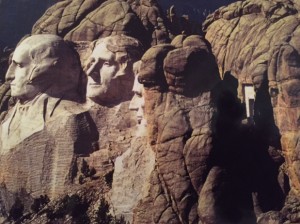 obtaining Congressional approval…an act of Congress…to hike that one, I’m sure it will continue to remain a mystery to me, for a long time, if not the rest of my life. Every time I look at the faces of our presidents carved on Mount Rushmore, I find myself looking to the right, to a spot that could easily be missed if I didn’t know what it was. In many ways, I look at that spot longingly, because I know that up that hill are the stairs that lead to the top, to the secret spot behind the faces, where the Hall of Records has been carved into the granite face of the mountain top, hidden from public view, only to be seen by a very select few…and probably never me, because Congress would have no reason to approve my request. Nevertheless, the trail’s draw on me remains.
obtaining Congressional approval…an act of Congress…to hike that one, I’m sure it will continue to remain a mystery to me, for a long time, if not the rest of my life. Every time I look at the faces of our presidents carved on Mount Rushmore, I find myself looking to the right, to a spot that could easily be missed if I didn’t know what it was. In many ways, I look at that spot longingly, because I know that up that hill are the stairs that lead to the top, to the secret spot behind the faces, where the Hall of Records has been carved into the granite face of the mountain top, hidden from public view, only to be seen by a very select few…and probably never me, because Congress would have no reason to approve my request. Nevertheless, the trail’s draw on me remains.
 With our nation’s Independence Day upon us, I find myself, like many other Americans, in a rather weary and confused state. So much about our country has changed, that it has almost become unrecognizable to me. The United States of America has always been known as the land of the free and the home of the brave, but now it seems that we are becoming the land of the free, only if we agree with what a select few want, and as for the brave, well it’s becoming very much out of style to stand up for our beliefs, values, or even for our country. I’m not picking on any one group here, but rather I find myself feeling quite sad that the sense of pride we have always felt for our nation is suddenly gone…at least in the minds of some people. I know that everyone really has a right to live their life in the way that they want to, but the problem is that lately everyone wants to tell everyone else how to believe. With that in mind, I thought it fitting to remind people about why our ancestors came here in the first place.
With our nation’s Independence Day upon us, I find myself, like many other Americans, in a rather weary and confused state. So much about our country has changed, that it has almost become unrecognizable to me. The United States of America has always been known as the land of the free and the home of the brave, but now it seems that we are becoming the land of the free, only if we agree with what a select few want, and as for the brave, well it’s becoming very much out of style to stand up for our beliefs, values, or even for our country. I’m not picking on any one group here, but rather I find myself feeling quite sad that the sense of pride we have always felt for our nation is suddenly gone…at least in the minds of some people. I know that everyone really has a right to live their life in the way that they want to, but the problem is that lately everyone wants to tell everyone else how to believe. With that in mind, I thought it fitting to remind people about why our ancestors came here in the first place.
When our forefathers left England, it was to get away from a government that made it a treasonous act to separate from the Church of England. The people who did not agree with the teachings of the Church of England had to leave or they would be killed. That was the reason that the First Amendment to our Constitution says, “Congress shall make no law respecting an establishment of religion, or prohibiting the free exercise thereof; or abridging the freedom of speech, or of the press; or the right of the people peaceably to assemble, and to petition the government for a redress of grievances.” These were very important parts of our  Constitution. The problem is that many people have forgotten those rights, or they have mixed up the meaning, thinking that we are not to have anything to do with religion in our government. That isn’t it at all. It says that the government is to stay out of our religious beliefs. That is not what is happening. Our current government is far too invasive in our religions.
Constitution. The problem is that many people have forgotten those rights, or they have mixed up the meaning, thinking that we are not to have anything to do with religion in our government. That isn’t it at all. It says that the government is to stay out of our religious beliefs. That is not what is happening. Our current government is far too invasive in our religions.
As time went on, England tried to usurp more and more authority over the young colonies. They tried to interfere with religion, economics, and politics. Even though we were a nation basically under them, we knew it could not continue much longer. It was decided that we needed to be independent from England. That was when we knew that we could not continue to be under this type of rule. So, why do we celebrate the 4th of July…Independence Day. We think of July 4, 1776, as a day that represents the Declaration of Independence and the birth of the United States of America as an independent nation. But it wasn’t on July 4, 1776 that the Continental Congress decided to declare independence. That was on July 2, 1776. It wasn’t the day we started the American Revolution either. That had happened back in April 1775. And it wasn’t the day Thomas Jefferson wrote the first draft of the Declaration of Independence. He did that in June 1776. It wasn’t even the date on which the Declaration was delivered to Great Britain. That didn’t happen until November 1776. It wasn’t even the date it was signed. That was August 2, 1776.
No, we celebrate the 4th of July, because that was the day that the Continental Congress approved the final  wording of the Declaration of Independence, in 1776. They’d been working on it for a couple of days after the draft was submitted on July 2nd and finally agreed on all of the edits and changes. That was the day that truly represents our Independence. Not the day it was accepted by Britain, but the day we decided to make it our own. That was the day we made freedom and independence our own. It was the day that we decided to live in peace together, with each man, woman, and child having certain rights that should never be denied them. I think some people in our country, and especially our leadership have forgotten that fact in their race to political correctness, anti-racism, and a thinly disguised attempt to control our religious rights.
wording of the Declaration of Independence, in 1776. They’d been working on it for a couple of days after the draft was submitted on July 2nd and finally agreed on all of the edits and changes. That was the day that truly represents our Independence. Not the day it was accepted by Britain, but the day we decided to make it our own. That was the day we made freedom and independence our own. It was the day that we decided to live in peace together, with each man, woman, and child having certain rights that should never be denied them. I think some people in our country, and especially our leadership have forgotten that fact in their race to political correctness, anti-racism, and a thinly disguised attempt to control our religious rights.
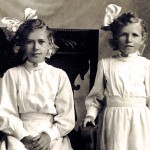
 There is a popular song by Miranda Lambert called “The House That Built Me.” It is a rather bittersweet song about visiting the house where she grew up, in and effort to find herself again. I suppose that it is very common to lose sight of self as the years go by, and life gets busier and busier. Sometimes we just find ourselves needing to regroup, to a degree. Of course, in the song, she really just wanted to get back in touch with her beginnings. I can understand that, since my sister, Cheryl Masterson, my mom Collene Spencer, and I took a trip back to Superior, Wisconsin, to reconnect with family members, the town, and the house where the first years of my life were spent. Of course, unlike Miranda Lambert, we didn’t ask to go into the house, although it might have been fun to do so, and unlike Miranda, I didn’t grow up in the house, but rather the first couple of years of my life. Nevertheless, standing there in front of the house, I found myself thinking about the home movies I had seen of our time there. They were good memories, and it felt good to be there to see that house that represented my beginning.
There is a popular song by Miranda Lambert called “The House That Built Me.” It is a rather bittersweet song about visiting the house where she grew up, in and effort to find herself again. I suppose that it is very common to lose sight of self as the years go by, and life gets busier and busier. Sometimes we just find ourselves needing to regroup, to a degree. Of course, in the song, she really just wanted to get back in touch with her beginnings. I can understand that, since my sister, Cheryl Masterson, my mom Collene Spencer, and I took a trip back to Superior, Wisconsin, to reconnect with family members, the town, and the house where the first years of my life were spent. Of course, unlike Miranda Lambert, we didn’t ask to go into the house, although it might have been fun to do so, and unlike Miranda, I didn’t grow up in the house, but rather the first couple of years of my life. Nevertheless, standing there in front of the house, I found myself thinking about the home movies I had seen of our time there. They were good memories, and it felt good to be there to see that house that represented my beginning.
My great aunt, Bertha Schumacher Hallgren and her sister, Elsa Schumacher Lawrence had the opportunity as teenagers to travel from their home in Fargo, North Dakota, to Minnesota. While there, they were not only able to see the house where they were born, but the actual room they were born in. Things are much different these days. Most people are born in a hospital, rather than at home, so we don’t necessarily think of the room we were born in, because there is almost no way to know exactly which one it was years later. Bertha and Elsa had such an amazing opportunity…one I suppose many of us might envy, if we thought about it very long. The time they lived in, combined with the kindness of the new owners, allowed them to take a small glimpse into their past. It was an event that affected Bertha so much, that she wrote about is years later. She too, had been a young girl when the family moved away, but unlike me, she was able to step back into the world, and feel what it was like in those early years.
No, I suppose you can’t really go home again, unless like my younger sisters, your parents stayed is the house where you grew up. In that case, while you have grown up, married, or moved out on your own, you still have 
 those close ties to the home of your youth, and with it, the memories and values you grew up with. Yes, my older sister, Cheryl and I do have those memories too, we have still found ourselves wondering what our lives would have been like, and who we would have been if our parents had stayed in Wisconsin. I know things would have been different for sure, but in reality, all the changes that have gone on in our lives have turned out to be the best life for us anyway. So maybe, going back to a lost childhood home really makes little difference in the grand scheme of things afterall.
those close ties to the home of your youth, and with it, the memories and values you grew up with. Yes, my older sister, Cheryl and I do have those memories too, we have still found ourselves wondering what our lives would have been like, and who we would have been if our parents had stayed in Wisconsin. I know things would have been different for sure, but in reality, all the changes that have gone on in our lives have turned out to be the best life for us anyway. So maybe, going back to a lost childhood home really makes little difference in the grand scheme of things afterall.
![37318_1282517634721_2551061_n[1]](https://carynschulenberg.com/wp-content/uploads/2015/07/37318_1282517634721_2551061_n1-150x150.jpg)
 That my niece, Chelsea Hadlock is a fashionista is a fact that no one will dispute. She has a style that is all her own, and it’s a style that a lot of girls wish they could pull off too. Yet, Chelsea does it with ease. She doesn’t mind a look that makes her stand out in a crowd. In fact, she thrives in just such a setting. When I was thinking about today’s story, I decided to enlist the help of a little birdy who knew Chelsea well…her friend, Sydney Hanson. Sydney told me about the Theme Party Queen. You see, our Chelsea loves to dress up, and I’m not just talking about in the latest style. Chelsea has a great imagination, and probably would have fit in quite well at the Masquerade Balls of yesteryear. Sydney tells me that she and Chelsea met after they graduated from high school, and in their before kids days, Chelsea was the one who went all…and I do mean all out for the theme parties they both attended. I have always known that Halloween is Chelsea’s favorite holiday, but I wasn’t aware that it is all about the costumes. I have to wonder if Chelsea just loves escaping to that imaginary, fantasy world the runs
That my niece, Chelsea Hadlock is a fashionista is a fact that no one will dispute. She has a style that is all her own, and it’s a style that a lot of girls wish they could pull off too. Yet, Chelsea does it with ease. She doesn’t mind a look that makes her stand out in a crowd. In fact, she thrives in just such a setting. When I was thinking about today’s story, I decided to enlist the help of a little birdy who knew Chelsea well…her friend, Sydney Hanson. Sydney told me about the Theme Party Queen. You see, our Chelsea loves to dress up, and I’m not just talking about in the latest style. Chelsea has a great imagination, and probably would have fit in quite well at the Masquerade Balls of yesteryear. Sydney tells me that she and Chelsea met after they graduated from high school, and in their before kids days, Chelsea was the one who went all…and I do mean all out for the theme parties they both attended. I have always known that Halloween is Chelsea’s favorite holiday, but I wasn’t aware that it is all about the costumes. I have to wonder if Chelsea just loves escaping to that imaginary, fantasy world the runs ![10676195_10202953479705529_3463465173877702689_n[1]](https://carynschulenberg.com/wp-content/uploads/2015/07/10676195_10202953479705529_3463465173877702689_n1-225x300.jpg) around in her mind and imagination.
around in her mind and imagination.
I’ve noticed that imagination in different areas of Chelsea’s life as well. Her Christmas tree always has a theme. She owns several sets of ornaments. I suppose people might think that strange, but Chelsea always has a beautiful Christmas tree…so think what you want to, but I think it’s cool. As to birthday parties…well, Chelsea really shines here. Her children, Ethan and Aurora will be the envy of all their friends…if they aren’t already. Chelsea is a great mom, but when she was pregnant with Ethan, she was convinced that he was a girl. Thankfully she found out before he was born or he would have come home to a pink princess themed room, for sure. Chelsea and her mom, Debbie Moss were about half scared at the thought of her having a son. It was like…what are we going to do with a boy. Now, I can relate to that, because having two daughters of my own, the three grandsons I have were a real culture shock too. Nevertheless, like me, Chelsea stepped into that role of the mother of a son, with ease and style. I would have expected nothing less. She still got her girl, and Aurora is a girly girl if there ever was one. So they are two of a kind, and both are fashionistas. I love the outfits Chelsea comes up with for them…often matching or almost matching…there’s that theme party queen again.
There is, however, one thing that I have never seen, and Sydney says Chelsea never does. That is to wear sweatpants out in public. I suppose they are not stylish enough, and we all know that Chelsea is all about style. 
 Now, I know that lots of people have worn sweat out in public…me included, but you have to admit that it isn’t a fashion statement. In fact, you are probably feeling the least good about yourself when you wear them. I know that’s what it was for me. Or maybe you are just a person who likes sweats for the comfort. Either way, they are not fashionista wear, nor are they the kind of thing you would ever see on a Theme Party Queen. Today is Chelsea’s birthday. Happy birthday Chelsea!! Always stay the beautiful girl, inside and out, that you are today. Have a great day!! We love you!!
Now, I know that lots of people have worn sweat out in public…me included, but you have to admit that it isn’t a fashion statement. In fact, you are probably feeling the least good about yourself when you wear them. I know that’s what it was for me. Or maybe you are just a person who likes sweats for the comfort. Either way, they are not fashionista wear, nor are they the kind of thing you would ever see on a Theme Party Queen. Today is Chelsea’s birthday. Happy birthday Chelsea!! Always stay the beautiful girl, inside and out, that you are today. Have a great day!! We love you!!
 Anyone who has ever tried to trace their family history knows just how difficult it can be to find the records sometimes. Early families kept their records mostly in the family Bible, or some other type of record keeping book, and if the records weren’t kept where they were safe, or where the next generation knew to look for them, they were often lost. It seems that some nations were more ahead of the pack when it came to registering the people…where it was for a good purpose or not. Later it was only churches that kept records of these things.
Anyone who has ever tried to trace their family history knows just how difficult it can be to find the records sometimes. Early families kept their records mostly in the family Bible, or some other type of record keeping book, and if the records weren’t kept where they were safe, or where the next generation knew to look for them, they were often lost. It seems that some nations were more ahead of the pack when it came to registering the people…where it was for a good purpose or not. Later it was only churches that kept records of these things.
The Bible tells us in Luke 2:1-5, “And it came to pass in those days that a decree went out from Caesar Augustus that all the world should be registered. This census first took place while Quirinius was governing Syria. So all went to be registered, everyone to his own city. Joseph also went up from Galilee, out of the city of Nazareth, into Judea, to the city of David, which is called Bethlehem, because he was of the house and lineage of David, to be registered with Mary, his betrothed wife, who was with child.” In many way, I suppose it was from this point on that the Romans and Jews began to keep such clear records, although, according to the Bible and the lineage of Jesus told there, the Jews had kept very clear records before that. It was clear record keeping of this type that made it possible for families to know their heritage.
As I have searched for my own ancestors, I have found that in more modern times, such as the 1000 to 1700s, the record keeping was not so good. I don’t know if people were just more lax about it, or if there seemed to be no good place to store these things. I could also be that in cases where good records were kept, fire, flood, or some other natural disaster destroyed them later on. I find that to be such a sad state of affairs, because it can put up a wall between the genealogical researcher and the valuable information they are searching for.
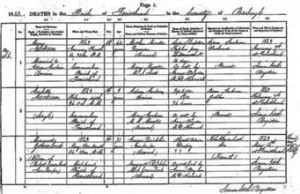
I guess I’m not the only person to ever feel that way, because on this day, July 1, 1837, England and Wales established the Civil Registration system to record births, marriages, and deaths. It is that same system that is used in Ancestry.com to provide valuable records used by genealogical researchers to this day. Of course, in the early days, the records were stored in volume after volume in some dusty corner of a courthouse or something. It was very hard to research family through that avenue, but with the invention of the internet, and the transfer of those records to it, the civil registration of births, marriages, and deaths has opened up many new doors in genealogical research.
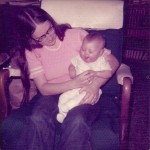
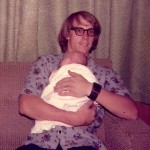 She got it from her grandma, my mother-in-law, Joann Schulenberg…that ability to go shopping for hours on end, looking for a bargain here and there. My daughter, Corrie Petersen is what many people would call a shopaholic, but what Corrie has on her grandmother speaks volumes. My mother-in-law looked through all the different sales flyers from the newspaper, as does my daughter, but Corrie has taken couponing to the highest level there is. When Corrie goes to the grocery store, she is able to buy $100.00 worth of groceries, and come out of there with the store owing her money. Who does that? Not many people. Not me for sure.
She got it from her grandma, my mother-in-law, Joann Schulenberg…that ability to go shopping for hours on end, looking for a bargain here and there. My daughter, Corrie Petersen is what many people would call a shopaholic, but what Corrie has on her grandmother speaks volumes. My mother-in-law looked through all the different sales flyers from the newspaper, as does my daughter, but Corrie has taken couponing to the highest level there is. When Corrie goes to the grocery store, she is able to buy $100.00 worth of groceries, and come out of there with the store owing her money. Who does that? Not many people. Not me for sure.
Now granted, my mother-in-law didn’t have a computer, and she wouldn’t know how to run one if she had. The internet has made a huge difference in all that Corrie has been able to accomplish. Nevertheless, to get to the level of couponing that Corrie has reached, took a lot of hard work and diligence, and that is where Corrie shines. Corrie is very skilled on the computer, and knows where to look for great couponing sites, and she 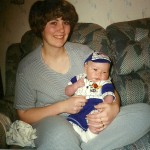
 takes the time to search out the coupons that go with the sales that create the overage of discounts that create a situation in which the store owes her money for shopping. It’s an amazing feat, and one that makes me very proud of her.
takes the time to search out the coupons that go with the sales that create the overage of discounts that create a situation in which the store owes her money for shopping. It’s an amazing feat, and one that makes me very proud of her.
Corrie has always been a stubborn woman…that part she gets from her mom, and once she puts her mind to something, she will not be moved off of her plan. She has the perseverance to stick to it, and that is why she succeeds. We, her family, might tease her and laugh about the long shopping trips she makes, but in all reality, we all wish we had the system in place that she does, because she has accomplished so much…gone so far beyond what we have done with the one or two coupons we manage to clip from the newspaper.
There is however, a part of Corrie that comes from her great grandmother, Nettie Knox…and that would be her birthday. Corrie not only made my husband’s grandparents Bob and Nettie great grandparents on this day 40 years ago, but she gave her great grandmother the best birthday present a grandmother could ever receive. 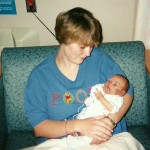
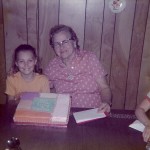 Over the years, they always celebrated their birthdays together, and the bond between them grew quite strong. I think one of the hardest days of Corrie’s life was when her dear great grandma passed away. There are still times she has trouble talking about her without shedding a tear or two. It was such a beautiful bond, and such a beautiful tradition, and one I was very sorry to see end. Happy 40th birthday to my beautigul daughter, Corrie, and happy birthday in Heaven to her sweet great grandmother, Nettie!! Two beautiful ladies. Corrie, have a great day!! We love you very much!!
Over the years, they always celebrated their birthdays together, and the bond between them grew quite strong. I think one of the hardest days of Corrie’s life was when her dear great grandma passed away. There are still times she has trouble talking about her without shedding a tear or two. It was such a beautiful bond, and such a beautiful tradition, and one I was very sorry to see end. Happy 40th birthday to my beautigul daughter, Corrie, and happy birthday in Heaven to her sweet great grandmother, Nettie!! Two beautiful ladies. Corrie, have a great day!! We love you very much!!
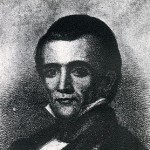 Every surname has an origin. That is because surnames were not always used. In the very earliest of times, people were known by their given name and the place they were from…meaning that I would have been Caryn of Superior. I’m not sure when the changes took place, but it often started by giving the people who lived in a town the town name as their last name, so since my husband’s family came from a town called Schulenberg, Germany, their last name became Schulenberg, and so it has continued to this day.
Every surname has an origin. That is because surnames were not always used. In the very earliest of times, people were known by their given name and the place they were from…meaning that I would have been Caryn of Superior. I’m not sure when the changes took place, but it often started by giving the people who lived in a town the town name as their last name, so since my husband’s family came from a town called Schulenberg, Germany, their last name became Schulenberg, and so it has continued to this day.
The Knox family name, however, has changed extensively over the years. The name is Gaelic, and it means a little hill. Figuratively is could also mean a stout man. The name was originally spelled Cnoc, and has since taken on many spellings, such as, Knox, Nox, Nock, Nocks, Nockes, Knock, Knocks, Knockes, Noke, Nokes, Noake, Noakes, and possibly more. What that says to me is that we may be related to many more people than we know, and how will we ever find out…seriously, how? This kind of a thing is truly a genealogical nightmare. Then, to complicate matters further, these people move from one country to another, and sometimes the records are not well kept, or worse yet, the names are changed to make them fit the country they are now living in.
The forebear of the Knox family was said to be Adamus, of Saxon origin, who received the barony of Cnoc or Knox in Renfrewshire as part of a dowry. The first recorded spelling of the name was that of John de Cnoc, his son, in 1260 in the charter lists for Renfrewshire. Over the centuries the family has included royalty, 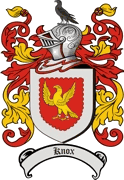 presidents, and others from aristocracy. Some of those notables are names I recognized before I was even a part of the family, such as James K Polk, who was our 11th President. I still have to wonder how many others out there who might have been notable and related to us.
presidents, and others from aristocracy. Some of those notables are names I recognized before I was even a part of the family, such as James K Polk, who was our 11th President. I still have to wonder how many others out there who might have been notable and related to us.
Since I have been more and more interested in Heraldry, I also checked into the heraldry of the Cnoc name. The oldest known coat of arms is in colors of gold and red. The gold signified generosity. The red signified warrior, martyr, and military strength. The helmet signifies wise defense. The dove signifies love and peace. In Ireland, the Dove was regarded as the bird of God. The shield Bordure – represents honor. It is a beautiful coat of arms, and is an item of proud heritage belonging to the Knox or Cnoc family. Nevertheless, while there is much known information, there is still much that is unknown, and that makes it a genealogical nightmare.

